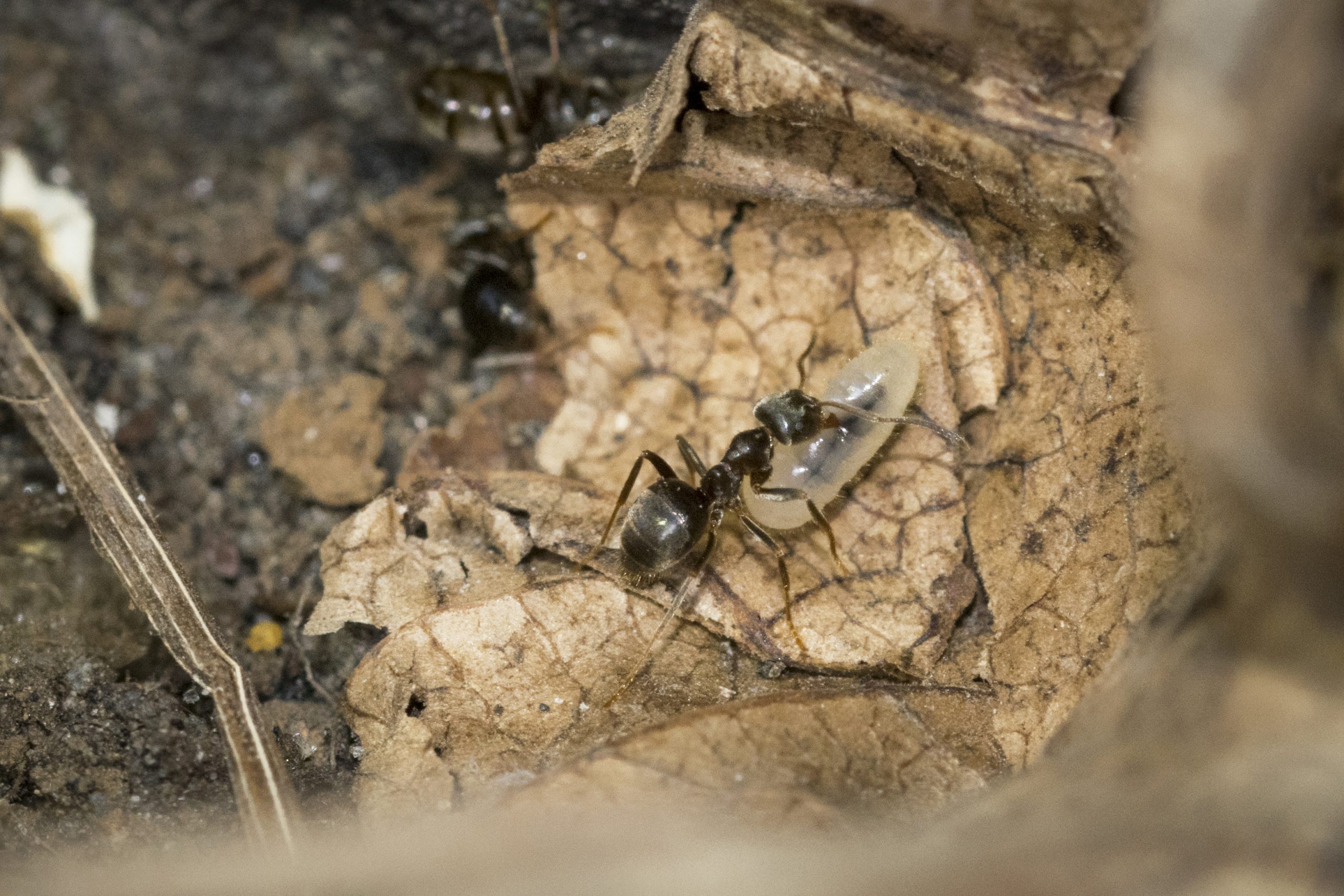The ant life cycle (Lasius sp.) – 1. Egg cluster; 2. 3. 4. Larvae of different instars; 5. Pupa that spun a silk cocoon around itself (some species develop without cocoon); 6. Adult ant
Photo: Marco Mancini
The ant life cycle (Lasius sp.) – 1. Egg cluster; 2. 3. 4. Larvae of different instars; 5. Pupa that spun a silk cocoon around itself (some species develop without cocoon); 6. Adult ant
Photo: Marco Mancini
The entrance of an ant nest can be very busy in these warm Icelandic summer days.
Workers are tirelessly walking in and outside the nest: foragers that leave the nest to look for food and then come back a few minutes later with food in their mandibles.
At the end of the video, we can also see a worker carrying a larva. Since many Lasius sp. may exhibit weak polydomy (the same colony can occupy two or more separated nests), this ant is presumably moving the larva from that nest to the next one, a few centimeters far.
